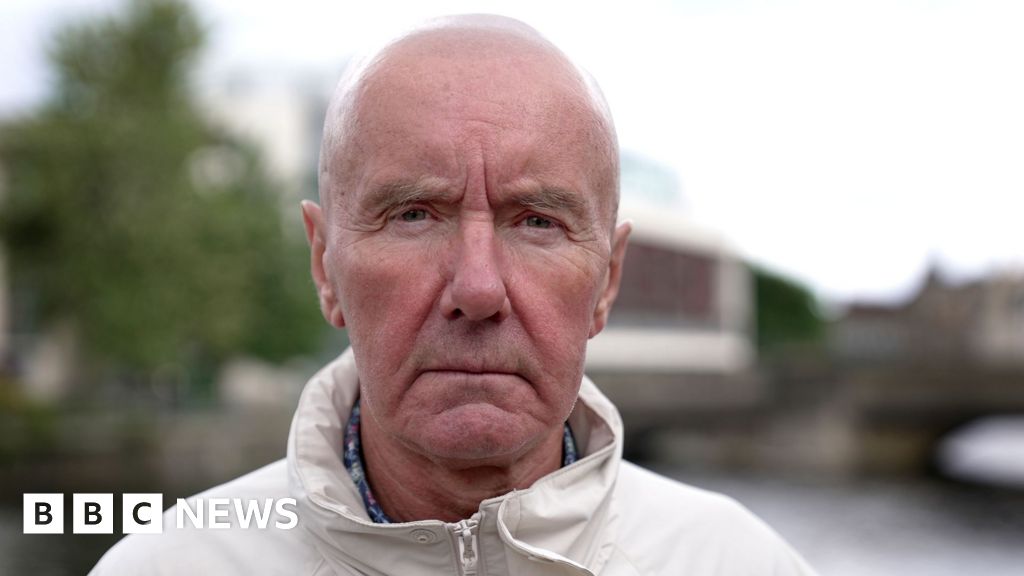Katie RazzallCulture and Media Editor

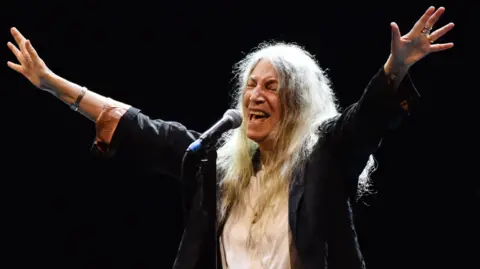 Getty Images
Getty Images
Patti Smith, who performed in London during the Horses 50th Anniversary Tour last month, told the BBC that it was "humbling to see young people in their 20s know the words"
Dua Lipa admires her writing. Taylor Swift referenced her in her track The Tortured Poets Department, singing: "You're not Dylan Thomas, I'm not Patti Smith".
Fifty years after Smith released her swaggering, era-defining album, Horses, she is back on the road and also publishing a new memoir, titled Bread of Angels.
"The idea of the book came to me in a dream," Patti Smith tells me.
It's a fantastic read - a portrait of an artist who was at the heart of New York's counter-cultural scene in the 1970s. Smith was rubbing shoulders with Bob Dylan, Bruce Springsteen, and the poet William Burroughs.

 Chuck Pulin/Cache Agency
Chuck Pulin/Cache Agency
Patti and Bob Dylan hanging out at the Bitter End night club in New York in 1975
During that heady period, she was performing at the legendary CBGBs (though the club "wasn't legendary yet… it was completely unknown" she tells me).
The singer-songwriter was also refusing to compromise to the whims of male record producers. "I had a lot of armour and it wasn't easily pierced," she says.

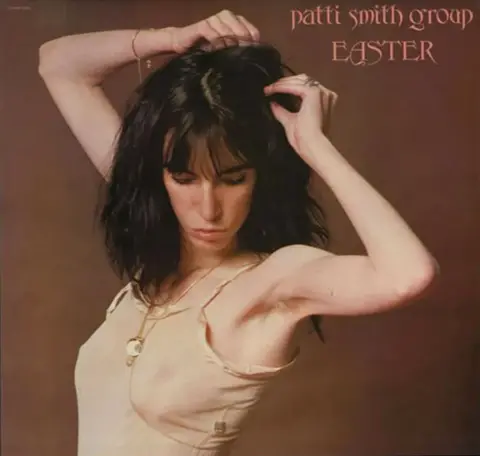 1977, Lynn Goldsmith/Arista Records
1977, Lynn Goldsmith/Arista Records
Her first album Horses was for the disenfranchised and the shunned.
"We were still living in a time where if a kid told their parents they were gay in the Midwest or somewhere, they were disowned. New York was filled with the disowned".
When we met, Smith had just played the Palladium on the London leg of her European tour.
Delivering songs that are at least half a century old to an audience of all ages, including young people who know her lyrics, "could bring you to tears, it's very humbling," she tells me. "It makes me feel like I'm still doing something useful - and that's a great feeling".

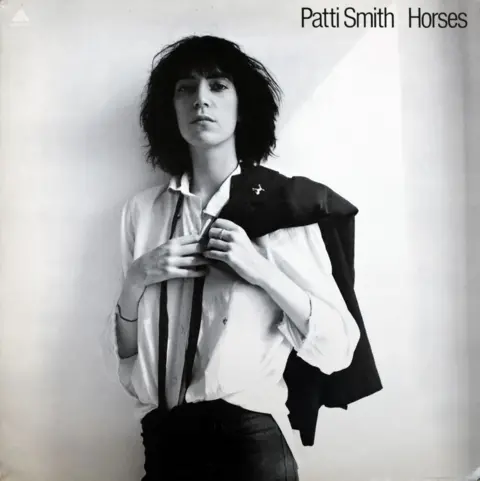 Patti Smith/Robert Mapplethorpe Foundation
Patti Smith/Robert Mapplethorpe Foundation
The photograph for the album Horses was taken by Patti Smith's close friend, Robert Mapplethorpe, who she described as the "artist" of her life
Being useful is clearly a driver for Patti Smith - a poet, writer, artist, activist and trailblazer whose anthemic rock song, People Have the Power, is a call to stand up for what you believe in.
She wrote the track with her husband, the musician Fred 'Sonic' Smith, who died more than 30 years ago, aged just 44.
The song was "his concept," she tells me "and it was for the people of the future, for marches, for protest, for just feeling some strength".
She's since "been on marches where people didn't know I was marching - and they were singing that song spontaneously".
It is "heartbreaking" that Fred didn't live to see it. But it also makes her "so proud for him and happy".

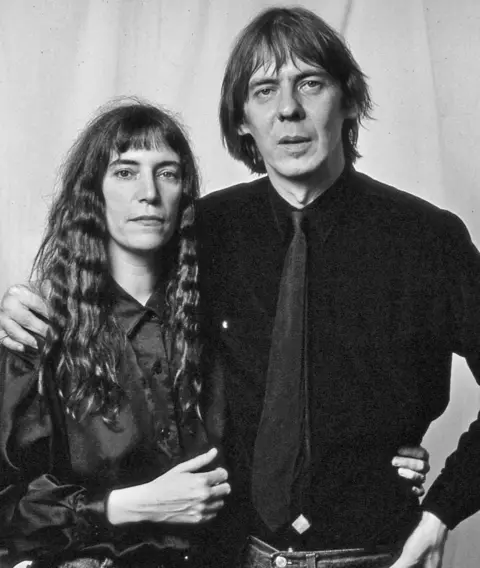 Seiji Matsumoto
Seiji Matsumoto
Patti Smith tells us that seeing her husband Fred for the first time was "feeling love at first sight"
When I ask if the new book is a love letter to him, she's visibly moved. Even 30 years on, it appears talking about Fred can bring her to tears. She takes a moment to compose herself, while sharing "it's not a sad feeling".
Probably her best known hit was also Fred-related. Bruce Springsteen's recording engineer had offered her a song that the singer had abandoned, to see if she could come up with an idea for the lyrics. She avoided listening until one night, when she was waiting for her weekly call from Fred, who was living in Detroit.
She played the tape and tells me she said to herself: "''It's one of those darn hits'. I knew it, as soon as I listened to it. It was in my key, it was perfect, it had sensualness, it was anthemic."
She wrote the lyrics to Because the Night as she waited for Fred to call, including the lines, 'Have I doubt when I'm alone? Love is a ring, the telephone'. (He did eventually call).

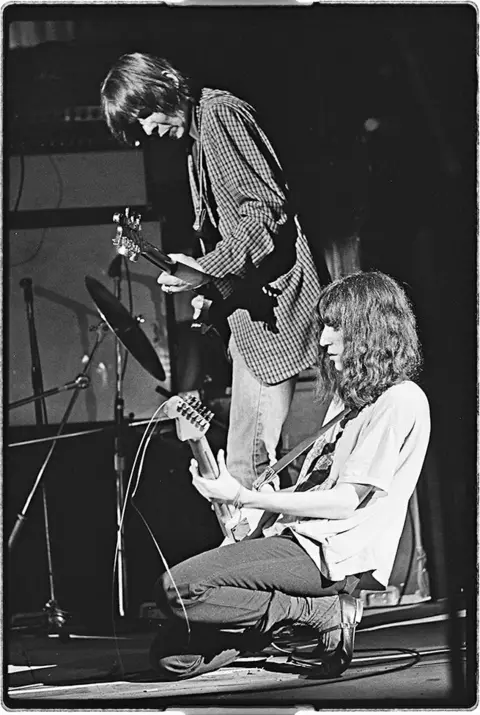 Jody Caravaglio
Jody Caravaglio
Patti and her husband Fred on stage in 1979
Smith ditched her music career when she was at the very top, touring Europe and being chased down the street by fans, because she fell in love with Fred. She gave up the band to return to her first love - poetry - and wedded bliss (the couple had two children together).
The book "is a love letter to my parents, to my siblings, to my husband, to my brother, to all of the people named and unnamed that helped shape me".
She's certainly lost more than her fair share of loved ones far too young.
Not just Fred, but her best friend, the photographer Robert Mapplethorpe, who was felled by Aids in 1989 at the age of 42. (Smith's 2010 book Just Kids, charts their relationship and was described by Dua Lipa as "an incredible book and such a time capsule of creativity when it was really emerging, especially during that time in the 1960s and 1970s").
Patti's adored brother Todd also died at the age of 45.

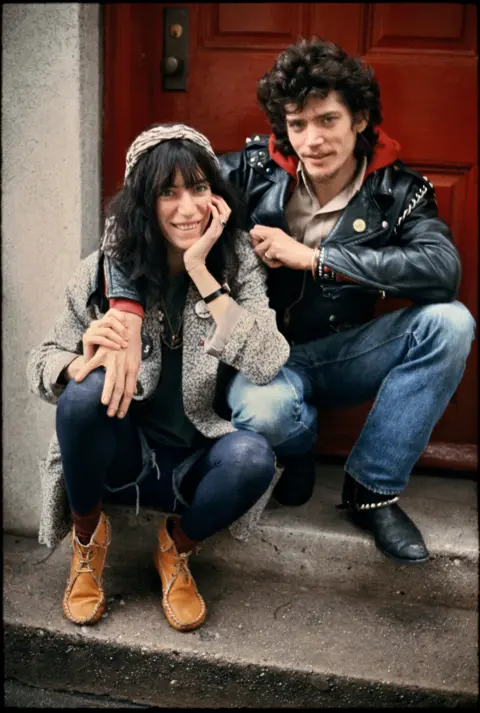 Kate Simon Photography
Kate Simon Photography
Smith describes Robert Mapplethorpe, in whose memory she wrote Just Kids, as "the artist" of her life
In Bread of Angels, Smith writes with her usual vividness about her upbringing. Her family relocated 11 times before she was four years old; they were evicted and had to live with relatives; they moved into a rat-infested tenement building in Philadelphia.
But what radiates most from the book is how she developed her artistic passions from a really young age.
While most of us were still honing our fine motor skills playing with Lego bricks, the young Smith seemed to be asking big philosophical questions about life and becoming fascinated by words.
Poetry, she writes, "formed a map that led to the kingdom of the infinite imagination".
She was obsessed with the French poet Arthur Rimbaud, and aged 17, it was a "seamless transition" to Bob Dylan.
"Both poets' words seemed as if they were written for the tribe of black sheep, outsiders trying to exist in the times they were dealt," she says.

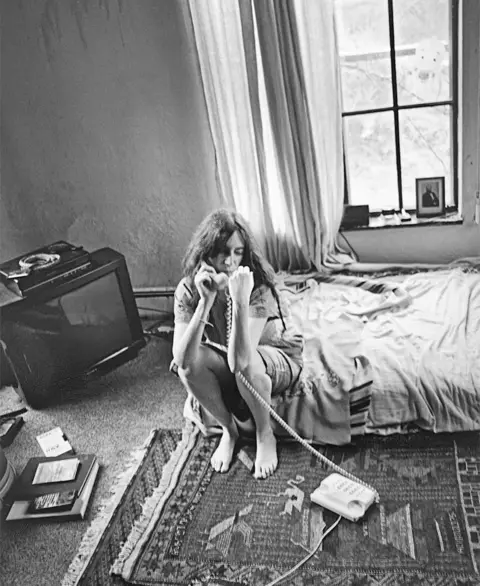 Steven Sebring
Steven Sebring

 Getty Images
Getty Images
Patti Smith attending an exhibition of her art in Glasgow in 2006
As any of the 1.4 million people who follow her on Instagram know, she's an artist to her core.
The book delves deeper into what shaped her.
Smith described to me discovering some Vogue magazines as a child and becoming enchanted by contemporary photography.
She was "shocked, stunned, beguiled. It was a whole new world… I can't say why a little seven-year old kid was drawn to that, living in a lower middle class area after World War II, but it was a real thing".
Age nine, struck down with a virus during the Asian flu pandemic, and so ill the doctor says she probably won't survive, her mother bought her a boxset recording of Puccini's Madame Butterfly and put it within eyeshot of her bed.
Smith genuinely believes that the desire to listen to it made her get well.
And on the family's only visit to the Philadelphia Museum of Art, young Patti slipped off alone to a hall of Picassos and was "smitten". She had "fallen for art".
It was her beloved father who took her to that museum. Smith was a sickly child, contracting bronchial pneumonia, tuberculosis, German measles, mumps and chicken pox which kept her in "periods of lengthy bed rest".
Her mother told her her dad actually saved her life as a baby. She was "born coughing". He would hold little Patti above a steaming washtub to help her breathe.

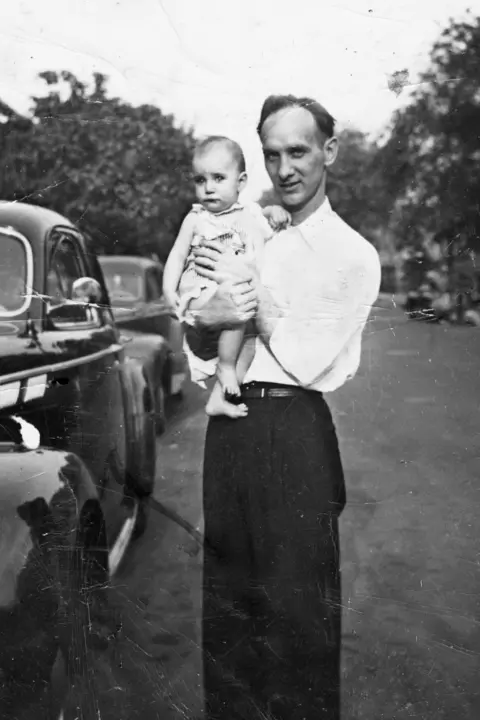 Linda Smith Bianucci
Linda Smith Bianucci
Patti says that she "modelled" herself after Grant Smith, the man who brought her up as his daughter, but she had always felt "different"
Her love for him is evident. But after he and her mother died, she and her sister did a DNA test to find out more about their heritage. Smith made the "shocking" discovery that her biological father was someone different. She reveals it for the first time in her memoir.
"I would be lying if I said I wasn't a bit broken-hearted.
"It actually held the book up for a while because I had to process that. So much of my book is dedicated to my father and it still is.
"He will always be my father, but now I have two fathers".
She discovered her blood father was Jewish, "one hundred percent Ashkenazi," with relatives who she says were driven out of Russia to Ukraine, then on to Liverpool, England, and Newfoundland, Canada, before taking root in Philadelphia in the US.
"I don't know a whole lot about him," she tells me. "But everything I found out about him, I recognise. I recognise myself in his face. I've only seen a couple of pictures, but the same attitude. I can just feel it".
The discovery has given her answers about the "things about yourself that the rest of your family doesn't have".
Smith praises her mother for keeping the secret from her. "This is how great my mother was. My mother knew in her lifetime that I favoured my father, so she never said a word to make me feel that he wasn't… she did her best to protect me".

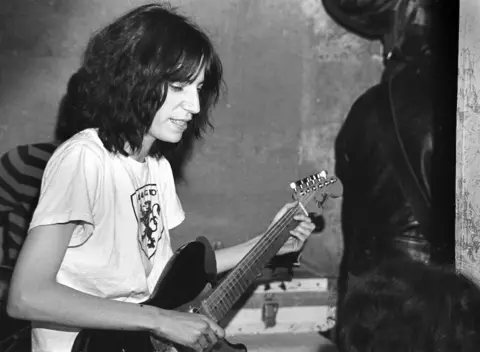 Getty Images
Getty Images
Patti Smith backstage practicing her set before going on stage in Long Island, New York in 1975
Patti Smith has always struck me as uncompromising. Think of those fabulous, almost gender-defying photographs from the 1970s.
She was the height of countercultural cool.
I wasn't sure what to expect when we met. I found a warm and thoughtful person, with an intense aesthetic sensibility and a - just as intense - love of family. Her losses have shaped her.
Her poetic artistry has shaped us all.
She's also an ardent supporter of the younger female artists who have followed in her footsteps. Dua Lipa. Taylor Swift. They're "doing a good job," she tells me, because the music industry is "dominated by women".
She calls them "strong girls… like the song The Kids are All Right, the girls are all right. They're facing a lot of stuff, but they're facing it well".
Bread of Angels by Patti Smith is published on 4 November

 2 hours ago
1
2 hours ago
1







































